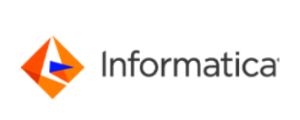
Informatica Likes Its Chances in the Cloud

(Istel/Shutterstock)
Quick: Name a company that made its name in the 1990s and 2000s by providing data integration tools for enterprise analytics running in on-prem data centers, but has since pivoted the cloud and was even named Snowflake’s partner of the year? If you said “Informatica,” then give yourself a green checkmark.
Informatica was born at the dawn of the data warehousing age, when Fortune 500 firms employed millions of people and spent billions of dollars to ensure their operational data was thoroughly cleansed and rationalized and stored in third-normal firm so that SQL-loving analysts write build reports describing what just happened, and also what to expect.
But a lot has changed over the years. Data warehousing giants like Teradata are no longer the market-leading powerhouses they once were, and now, we find ourselves firmly in the midst of a massive migration into cloud data warehouses. Snowflake’s uber-successful IPO caught the attention of everyday investors, but really it was the collective growth of AWS, Microsoft Azure, and Google Cloud into do-it-all data platforms (including big SQL analytics and machine learning and all the rest) that solidified the cloud trend.
Along the way, Informatica lost a bit of its luster. In 2015, Informatica was de-listed from NASDAQ and acquired for $5.3 billion by Permira funds and the Canada Pension Plan Investment Board. Just as with Teradata, customers question whether the standard-bearer of the previous data age still had anything left in the tank.
But a funny thing happened between there and here: Informatica refused to surrender its crown in the data integration space. There was a lot of talk about new data management paradigms, but according to Amit Walia, who took over the CEO’s chair at Informatica in January, Informatica is still leading the charge as the big data management problem moves to the cloud.
“This is the one thing I can say, with a huge amount of pride: We are the only software company in the world that leads in all of the market categories we compete in, including cloud,” Walia told Datanami earlier this year. “There are five [Gartner] Magic Quadrants we compete in. We lead in all five. One of them is called enterprise platform as a service. We have always been the leader, as well as biggest market share leaders.”
The challenge that Informatica faces is that it must adapt to new cloud data norms, without leaving behind its legacy customer base. While the cloud is where much of the growth is happening, many of the largest companies in the world still keep much of their data – and most of its most-important data – safely ensconced in on-premise systems. The large amount of on-prem systems, as well as the growth of data movement within clouds and between clouds, are reasons why we have not been able to shake ETL, despite the big data revolution.
Informatica clearly likes its odds in the cloud. In fact, some of the cloud companies (including one named AWS) are Informatica customers. But hybrid is the name of the game. “Our goal is to provide hybrid,” Walia said. “We are native cloud. But many of our large customers want to have hybrid [infrastructures].”
For Walia and his Informatica executives, where the ETL or master data management processes run is just an implementation detail. The data transformation processes, metadata collection, or master data management can run on and touch multiple systems, on the cloud and off it.
The real focus, Walia says, is the data itself, wherever it happens to be.
“Data is a platform. Data is not an afterthought, because all strategic initiatives are data led,” Walia said. “Data is the soul of digital transformation. So creating a platform based on the right data management technology is only going to be an accelerant to time-to-value and achieving your business transformation goals.”
Today, Informatica unveiled its fall release, which brings a number of enhancements to its data management platform. The Redwood City, California company says its software can be used to buld “cloud-native advanced serverless data integration pipelines in any cloud.” Specifically, it touted improvements to its auto-scaling, pushdown optimization, and Spark support, as well enhancements for AWS, Azure, GCP, and Snowflake.
The fall release also featured the company’s “intelligent” data fabric, which features “active” metadata management and an AI-powered data catalog. Specific enhancements include new “data asset analytics for measuring and optimizing data value, an advanced custom metadata loader tool, cloud scanner enhancements for Azure Data Lake Storage Gen2, and cloud deployment option for Azure Clearlake HD Insights,” the company says. Metadata connectivity and data lineage have been bolstered with the integration of Compact Solutions’ technology.
Informatica also rolled out a new data marketplace. Customers will find data usage ratings and an advanced data asset request framework. There are also new data privacy management capabilities, which should help customers deal with the array of emerging regulations.
Different personas have different data management requirements, and Informatica is catering to these differences with “domain-specific 360-degree solutions.” With different personas targeting customer, product, supplier, and finance personnel, Informatica hopes to boost contextual understanding.
Informatica also talked up its AI-powered enterprise iPaaS, dubbed the Informatica Intelligent Cloud Services (IICS). The company says the IICS provides an “advanced serverless data integration, runtime continuity support for mass ingestion and data quality, enhanced operational insights and auto-remediation, ability to define more expressive REST APIs with zero-code, and expanded multi-cloud support with new services on AWS, Azure, GCP, and Snowflake.”
All told, Informatica is clearly looking to leverage its long history in data integration and its 9,500-strong customer base to take the lead in the data integration market. Today’s data volumes and data complexity are orders of magnitude larger than when Informatica got its start. But that experience breeds a certain amount of capability and trust, and Informatica is capitalizing on that trust, particularly when it comes to larger firms with multiple big data initiatives.
“[Customers are saying] I need to think about data as a platform across all my initiatives. That is the ‘aha’ that I hear from CIOs now,” Walia said. “But I don’t want to do it 10 times. I want to have some level of platform to drive this faster. That’s the only way they will accelerate, the only way, which is why, as I said, our goal has been to skate where the puck is going.”
Related Items:
Running Sideline to Sideline with Big Data
What Informatica’s Buyout Means to Big Data Integration

































